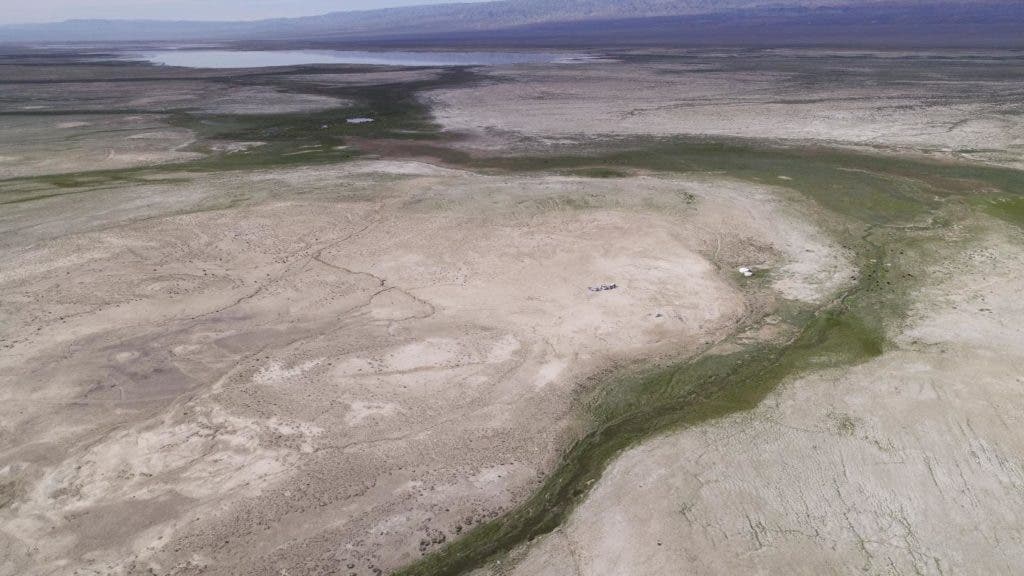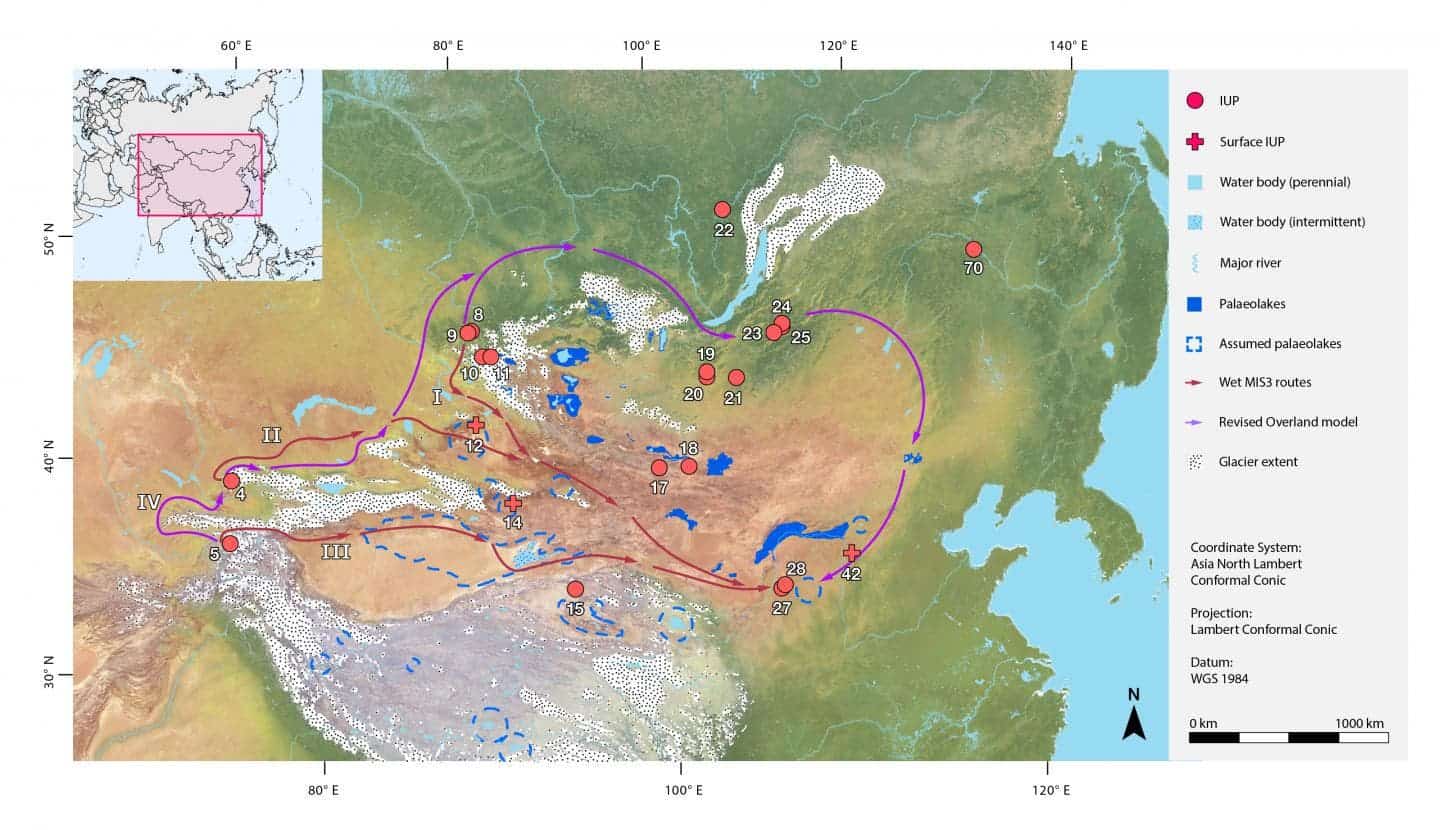Our species, Homo sapiens, gradually dispersed across the Asian continent during the Late Pleistocene (120,000-12,000 years ago). Most scholars have assumed a main southern migratory route, along the coast of the Indian Ocean, while routes in Northern and Central Asia were probably neglected due to their rough and inhospitable conditions.
In a new study, researchers found that these allegedly neglected routes are somewhat plausible after all. The authors argue that climate change may have made these regions easier to cross than they are today, opening up a crucial corridor for hominin dispersal.

Ancient lake landforms around Biger Nuur, Mongolia, which is evidence of larger lake sizes in the past. Credit: Nils Vanwezer.
Asia is a huge place, but humans managed to colonize it with remarkable efficiency. Most models of human dispersal assume that humans would have avoided passing through the Gobi Desert and the Altai Mountains, instead advancing through India and Southeast Asia or through Siberia, in the north.
However, archaeological findings from the past decade — such as the Denisova Cave and the Baishiya Karst Cave in China — has revealed that many areas of the globe that are today considered inhospitable might not have always been so in the past.
“Our previous work in Saudi Arabia, and work in the Thar Desert of India, has been key in highlighting that survey work in previously neglected regions can yield new insights into human routes and adaptations,” said Professor Michael Petraglia of the Max Planck Institute for the Science of Human History, a co-author of the new study.

The three routes from the “wet” simulations and the single route from the “dry” simulation are presented together in conjunction with palaeoclimatic extents (glaciers and palaeolakes). Credit: Nils Vanwezer and Hans Sell.
The team of researchers at the Max Planck Institute and the Institute of Vertebrate Paleontology and Paleoanthropology in Beijing, China, claims that climate change may have made northern corridors more accessible, allowing early human settlers to travel through.
The authors developed a Geographic Information Systems (GIS) software that maps geographical features alongside ancient climate records (past lake extents, changing precipitation amounts, changing glacial extents in mountain regions) in order to determine how environmental barriers might open or close different migration corridors.
“We factored in climate records and geographical features into GIS models for glacials (periods during which the polar ice caps were at their greatest extent) and interstadials (periods during the retreat of these ice caps) to test whether the direction of past human movement would vary, based on the presence of these environmental barriers,” said Nils Vanwezer, a Ph.D. student at the Max Planck Institute for the Science of Human History and a joint lead-author of the study published in PLOS ONE.
“We found that while during ‘glacial’ conditions humans would indeed likely have been forced to travel via a northern arc through southern Siberia, during wetter conditions a number of alternative pathways would have been possible, including across a ‘green’ Gobi Desert,” he continues.
The authors emphasize that their model does not prove that Pleistocene humans took such pathways. Instead, the study offers plausible pathways for human migration into eastern Asia which subsequent studies can investigate in the field.
“These models will stimulate new survey and fieldwork in previously forgotten regions of northern and Central Asia,” says Professor Nicole Boivin, Director of the Department of Archaeology at the Max Planck Institute for the Science of Human History, and co-author of the study. “Our next task is to undertake this work, which we will be doing in the next few years with an aim to test these new potential models of human arrival in these parts of Asia.”









